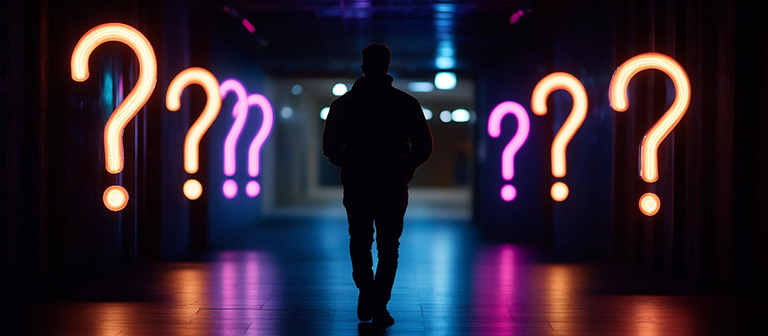- info@uxgenmarketing.com
- U-211, Vaishnav Enclave, Sec 67A. Gurugram. Haryana. 122101
The Digital Marketing Funnel & How to Make It Work

The Digital Marketing Funnel & How to Make It Work
If you’ve ever felt like your marketing is shouting into the void—ads running, blogs published, emails sent, yet sales just… trickle—you’re not alone. Years ago, I was in the same spot with a mid-size B2B client. Great product, intelligent people, sluggish pipeline. The fix wasn’t “more content” or “bigger budget.” It was a simple map: a digital marketing funnel that showed where people were getting lost and how to guide them forward.
Today, I’ll explain that map in easy English—no jargon wall. You’ll know what a funnel is, why it matters, the stages, the numbers that keep you honest, and a practical way to build yours. I’ll also share how UXGen Studio (for UX and conversion) and UXGen Marketing (for demand gen and CRM) plug in to make this real.
What is a digital marketing funnel?
A digital marketing funnel is a simple model of how people discover you, learn about you, decide to trust you, and finally buy from you—then (ideally) stay with you and refer others. It looks like a funnel because many people enter at the top (they’re just browsing) and fewer emerge as customers at the bottom. The job isn’t to “force” people through. It’s to remove friction and make the next step obvious, one stage at a time.
A quick nuance: real customer journeys aren’t perfectly linear. McKinsey’s research introduced a “consumer decision journey” that loops (loyalty brings people back), not just a straight funnel. That’s why we design for decision-making moments across channels, not just a single path.
The stages
There are many variations (Awareness → Consideration → Conversion → Retention is the classic), but let’s use five simple stages that most teams can align on:
- Awareness – “I just discovered you.”
What helps: applicable top-of-funnel content, short videos, social posts, lightweight ads, and helpful SEO pages.
Measure: reach, views, qualified traffic, and first visits. - Discovery – “I’m curious. Tell me more.”
What helps: comparison pages, “how it works” demos, case studies, webinars, lead magnets.
Measure: time on page, scroll depth, downloads, demo sign-ups. - Consideration – “Convince me you’re right for me.”
What helps: proof (testimonials, ROI calculators), product tours, free trials, pricing clarity, live chat with real humans.
Measure: trial starts, PQL/MQL volume, sales-accepted leads. - Conversion – “I’m ready to act.”
What helps: fast pages, clean forms, transparent pricing, trust badges, flexible payment options, and no surprise charges.
Measure: purchase/lead conversion rate, drop-off by step. - Retention & Advocacy – “I’m staying—and telling others.”
What helps: delightful onboarding, proactive support, value-driven emails/WhatsApp, loyalty programs, referral nudges.
Measure: activation, NPS, repeat purchase rate, referrals, churn.
If you’re more comfortable with the See–Think–Do–Care model, it maps cleanly to the same idea, focusing on audience intent at each step. As analytics leader Avinash Kaushik puts it, there are “four different audience intent clusters”—See, Think, Do, Care—so you plan content and measurement to match intent, not just demographics.
Why funnels matter?
Let’s ground this with realistic, public benchmarks so expectations stay healthy:
- Typical conversion rates are modest. Many e-commerce sites average around 2–4% conversion rates, depending on the industry—so progress often comes from minor, compounding improvements across multiple touchpoints, rather than one magic bullet.
- Speed pays. Google’s research showed that improving mobile load time increased conversions by ~8.4% for retail and 10.1% for travel—tiny technical wins can lead to significant revenue growth.
Those two truths shape how we build funnels at UXGen: set clear, stage-by-stage targets, and always seek quick wins that reduce friction.
A story
A B2B SaaS founder came to us worried: decent traffic, but few demos and even fewer deals. We didn’t start with ads. We started with the map.
- Awareness: Blog topics were “inside-baseball.” We rewrote them in plain language, answered real questions, and added short explainer videos.
- Discovery: Case studies were PDF walls. We turned them into scannable web pages with outcomes up top (time saved, errors reduced), plus a CTA for a 10-minute product tour.
- Consideration: Pricing was “contact sales.” We added a transparent starter plan and a calculator.
- Conversion: We reduced the demo form from 9 fields to 4 and prioritized mobile speed for a more streamlined experience.
- Retention: We designed a simple onboarding checklist and sent targeted micro-tips via email/WhatsApp through week 1.
What changed? The demo-request rate climbed. Sales conversations got warmer (because content pre-answered doubts). Onboarding tickets dropped (the checklist worked). No one step was “viral.” But the system was.
How to build your funnel
- Start with one Ideal Customer Profile (ICP). Who’s the person you can help most today? Write their job title, goal, and the risk they’re trying to avoid.
- List the fundamental questions they ask at each stage. Awareness: “Is this even my problem?” Consideration: “Can you prove it works for someone like me?” Conversion: “What happens if it doesn’t work?”
- Create one helpful asset per stage.
- Awareness: a 90-second video or “How-to” guide.
- Discovery: 1 case study and a one-page explainer.
- Consideration: pricing clarity + ROI calculator.
- Conversion: a short form and a fast checkout/booking page (speed matters for conversions on mobile).
- Retention: onboarding checklist and a “Day 1–7” email/WhatsApp sequence.
- Make the next step painfully obvious. Every asset needs one clear CTA to the next stage—no multi-choice paralysis.
- Instrument events and goals. Track at least: visits by source, content engagement, trial/demo starts, checkout starts, purchases/leads, and retention signals (activation, repeat).
- Set stage-level goals and address the bottleneck, not the entire system. For example, if Consideration → Conversion is weak, work on pricing clarity and page speed before you spend more on awareness.
- Review weekly, improve monthly. Funnels are living systems—small, honest improvements compound.
Where UX meets marketing
How UXGen Studio helps (the UX/CRO engine)

- Journey & friction mapping: We conduct quick UX research (session replays, interviews, on-page polls) to identify sticking points by stage.
- Conversion-first design: Faster pages, clearer copy, cleaner forms, persuasive microcopy, trust cues in the right moments (not dumped everywhere).
- Performance & Core Web Vitals: INP/LCP/CLS tuning for landing pages and checkout—because milliseconds can move money.
- Evidence-driven experiments: A/B tests that target the bottleneck stage, not random “design refreshes.”
How UXGen Marketing helps
- Channel strategy by stage: SEO for awareness/discovery; search + retargeting for consideration; high-intent landing pages for conversion; email/WhatsApp/CRM for retention and expansion.
- Content that answers buyer questions: We write like humans, not bots—case studies that tell the business outcome in the first 50 words.
- CRM & automation: Lead scoring, lifecycle emails/WhatsApp, and pipeline hygiene so Sales works the right leads.
- Dashboards that show reality: Stage-wise KPIs, CAC/LTV signals, and alerts when a stage drops below baseline.
What should you aim for?
Benchmarks vary, but to double-check early targets:
- Site-wide conversion rates: Many teams achieve rates of 2–4% in e-commerce; B2B lead generation varies by offer and traffic quality (compare with peers, not unicorns).
- Speed goals: Treat Google’s mobile speed improvements as a business case. A faster page can lift conversions even without a new creative.
- Funnel balance: If your bottom-of-funnel is starved, don’t double awareness spend. Fix the leak first. (Yes, this is where most budgets go to waste.)
McKinsey’s takeaway still holds: think in terms of the decision journey, not just a one-way pipe—plan for loops, including referrals and returns.
A 7-day starter plan
- Day 1: Write your ICP and top 5 questions by stage.
- Day 2: Outline a one-page explainer and a case study template (outcome at the top).
- Day 3: Trim your primary form to essentials; add social proof near the CTA.
- Day 4: Run a page-speed pass on your highest-value page (images, scripts, caching).
- Day 5: Record a 90-second “what we solve” video for awareness.
- Day 6: Set up a simple retention sequence (Day 1–7 tips).
- Day 7: Build a stage-wise dashboard and pick one bottleneck to fix next month.
If you want a partner, UXGen Studio handles the UX/CRO work, and UXGen Marketing handles the traffic, content, and CRM automation—all in one integrated team, one funnel.
FAQs

1) What’s the difference between a marketing funnel and a sales funnel?
They’re siblings. Marketing nurtures attention and intent (Awareness → Consideration). Sales turns intent into revenue (Consideration → Conversion and beyond). In small teams, the same people do both—just keep the stages clear.
2) How long will it take to see results?
Speed wins (technical fixes) can move numbers in weeks. Content and SEO compounding typically takes 2–3 months to yield steady signals; CRM/retention often starts showing a lift within the first 30–45 days, provided onboarding improvements are made. Timelines depend on traffic volume and offer strength.
3) Which tools should I start with?
Whatever keeps you moving. A fast CMS, an analytics stack you read, and a CRM you’ll maintain. We commonly pair GA4 + event tracking, a lightweight A/B testing tool, and a CRM/marketing automation platform for lead scoring and lifecycle emails.
4) Do I have to use every channel?
No. Pick one channel per stage to start. For example: SEO for Awareness, a case study for Discovery, retargeting ads for Consideration, and a fast checkout/booking flow for Conversion.
5) How do I know which stage is broken?
Look at stage-to-stage conversion rates. Lots of traffic but few demo requests? Fix Discovery/Consideration (proof, pricing clarity). Many demos but few closed deals? Sharpen bottom-of-funnel and onboarding.
One last nudge
A funnel isn’t a report. It’s a promise to your future customer: “We’ll make every next step clear.” When you keep that promise—through honest copy, fast pages, human stories, and respectful follow-ups—you’ll feel the flywheel pick up.
If you need help with app development or fixing yours, UXGen Studio (UX/CRO) and UXGen Marketing (demand gen & CRM) can work together as one cohesive team. We’ll start where it hurts most, prove lift early, and build your engine stage by stage.







